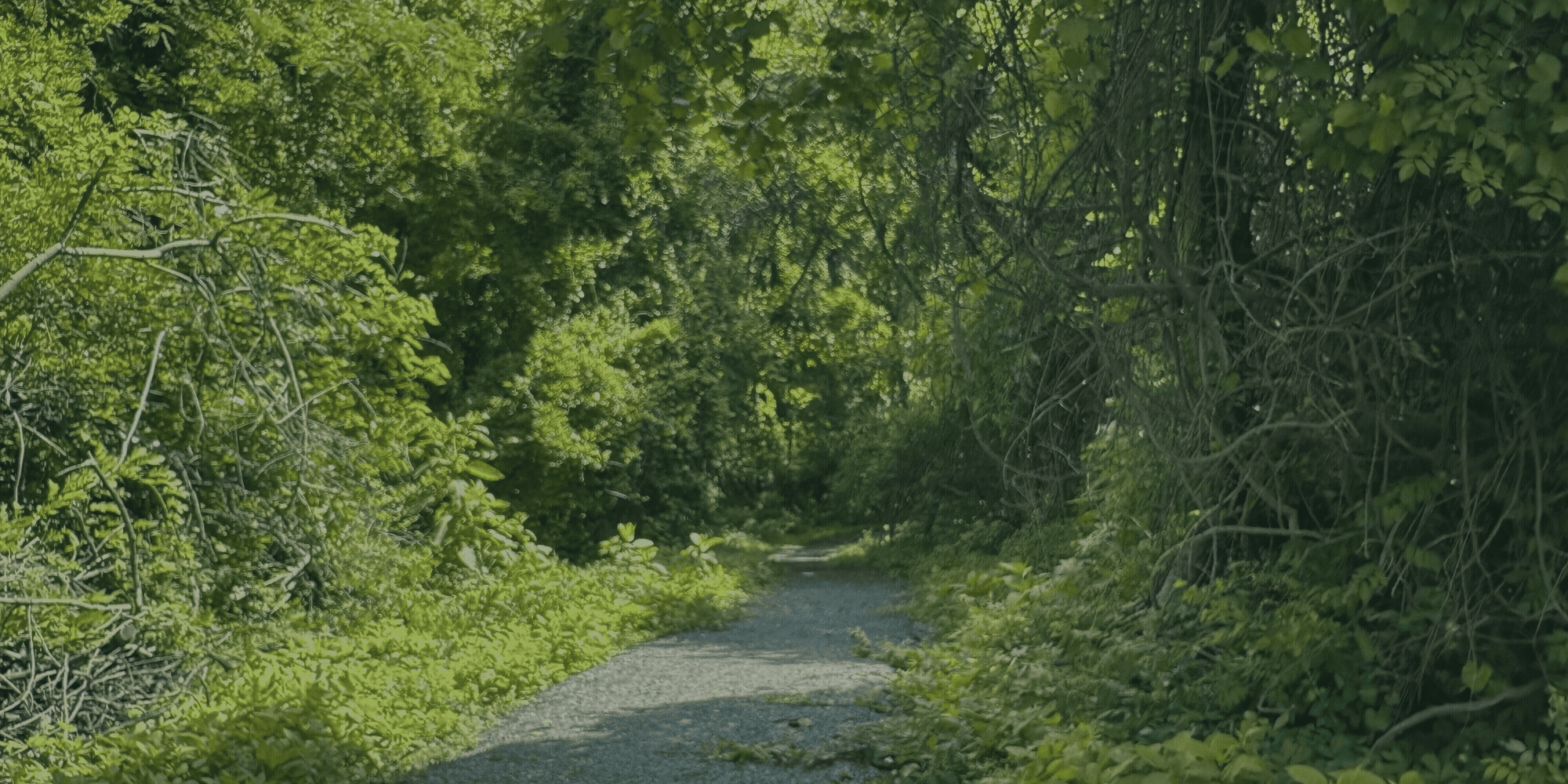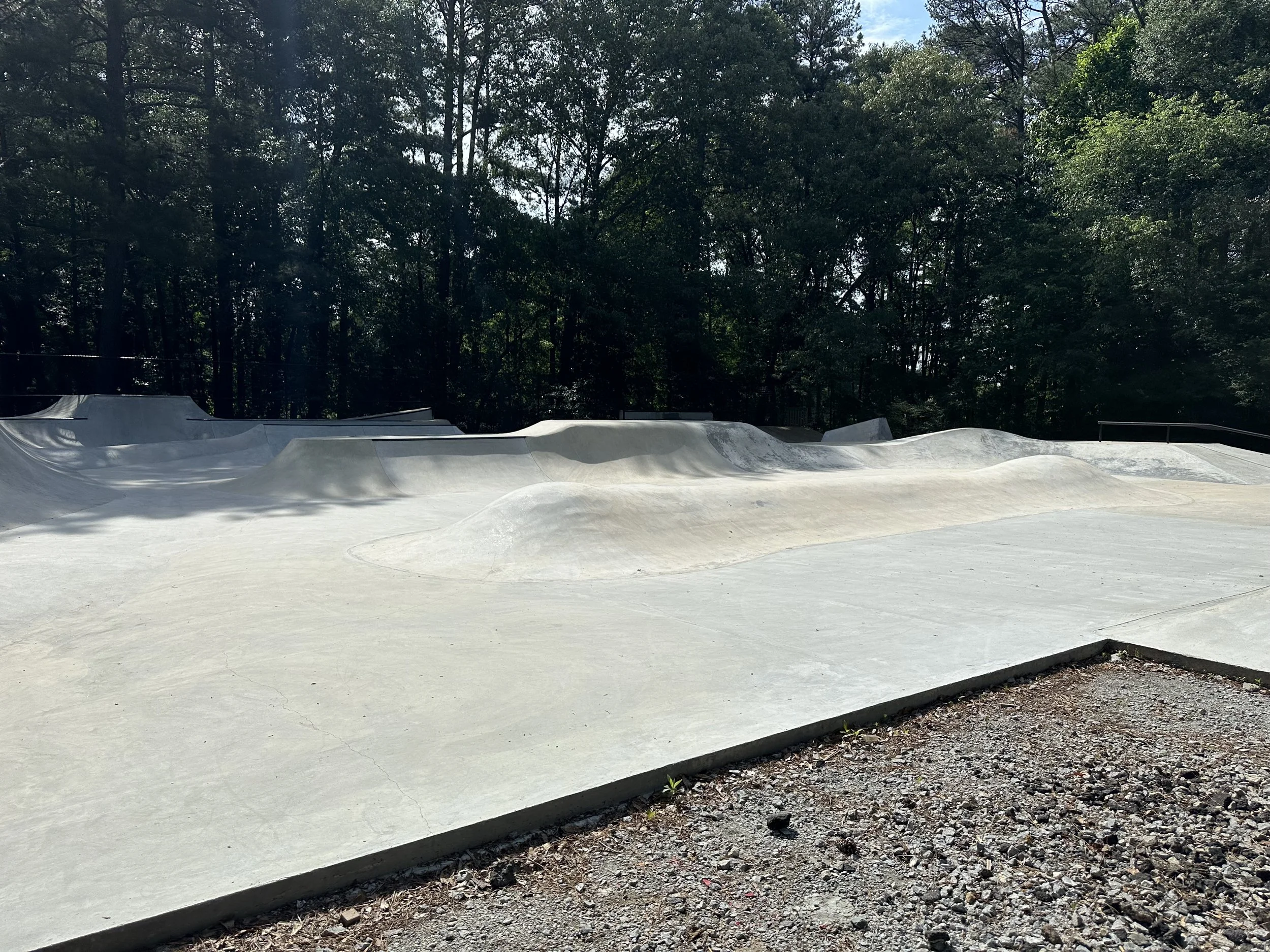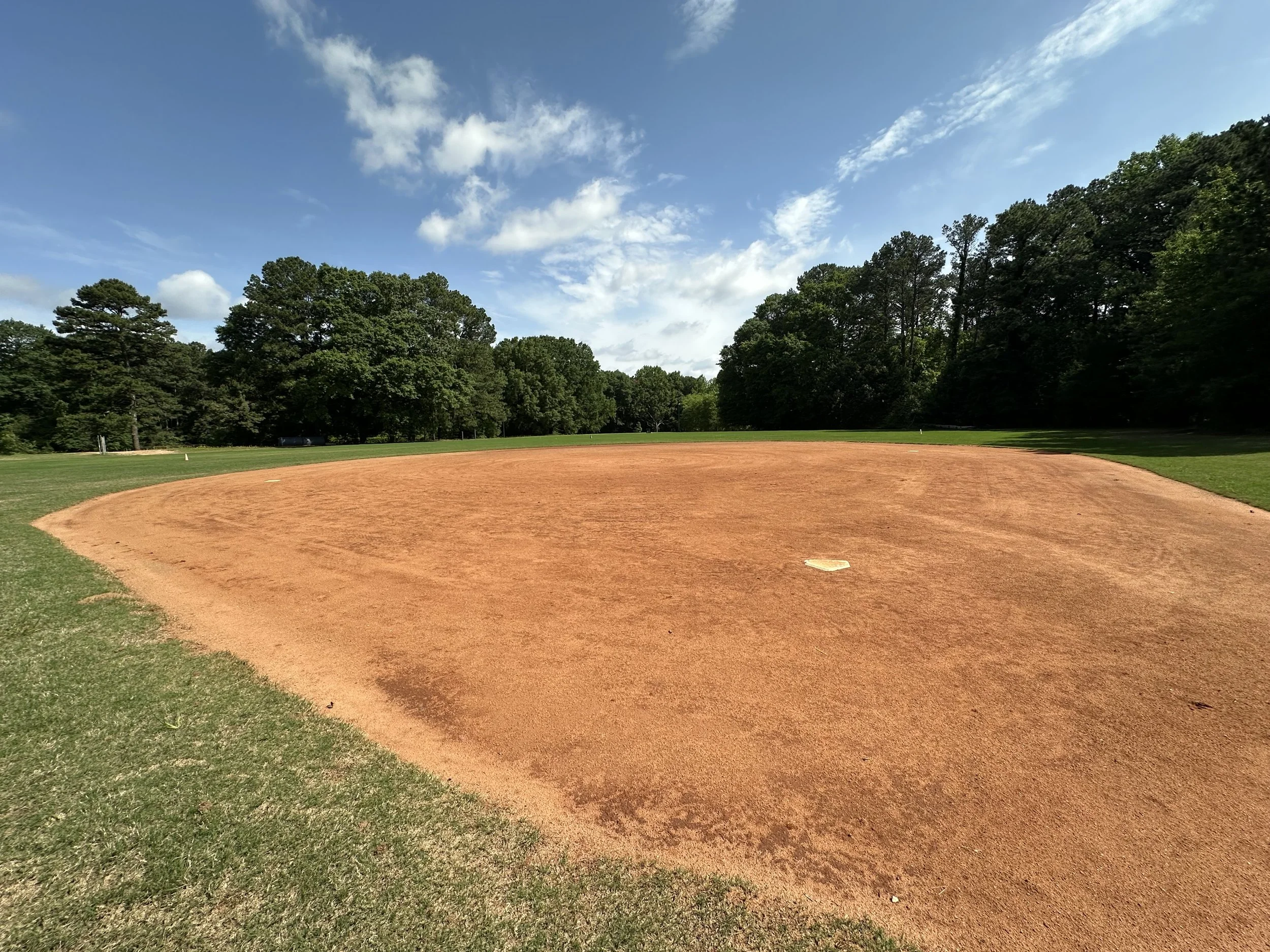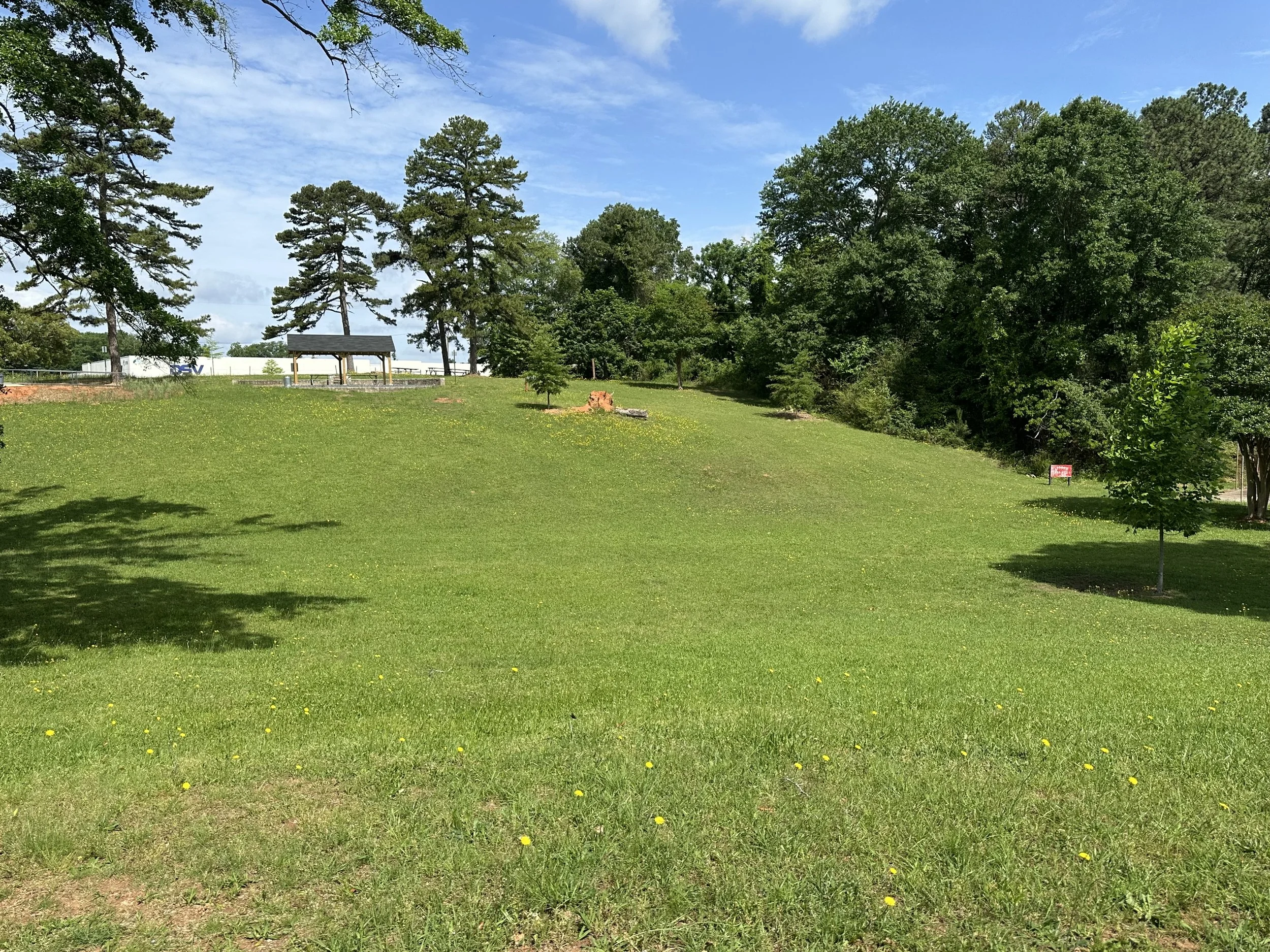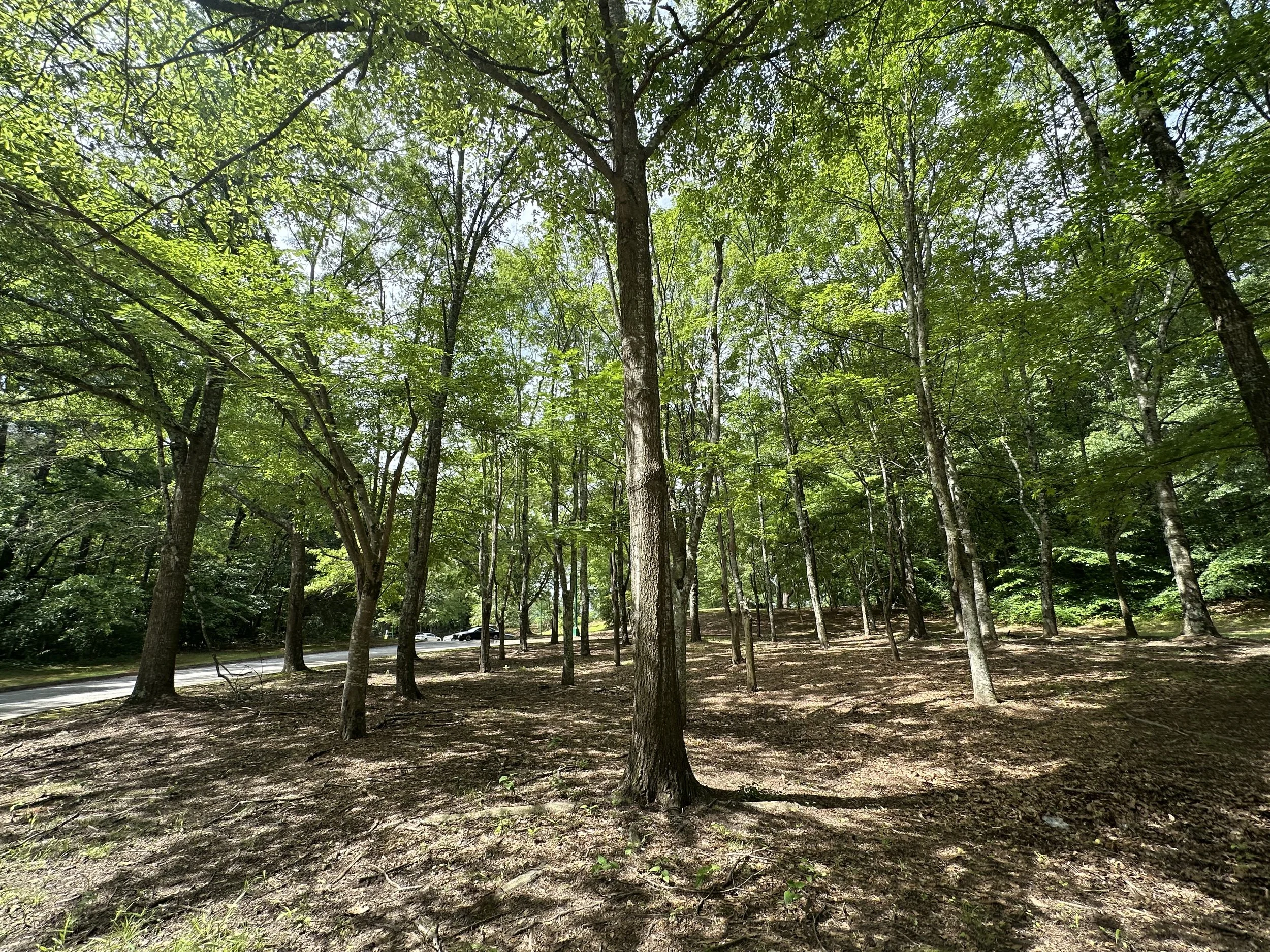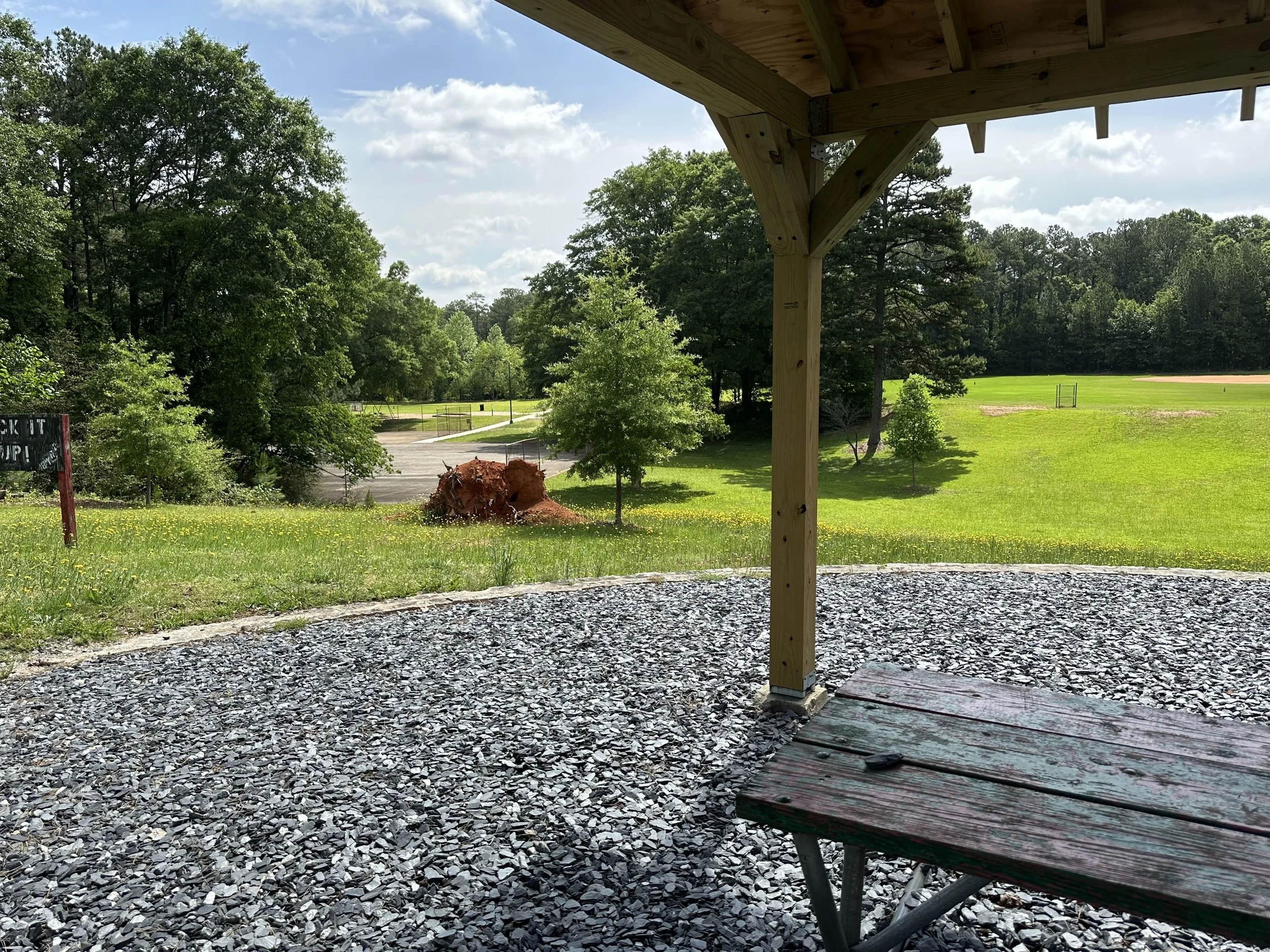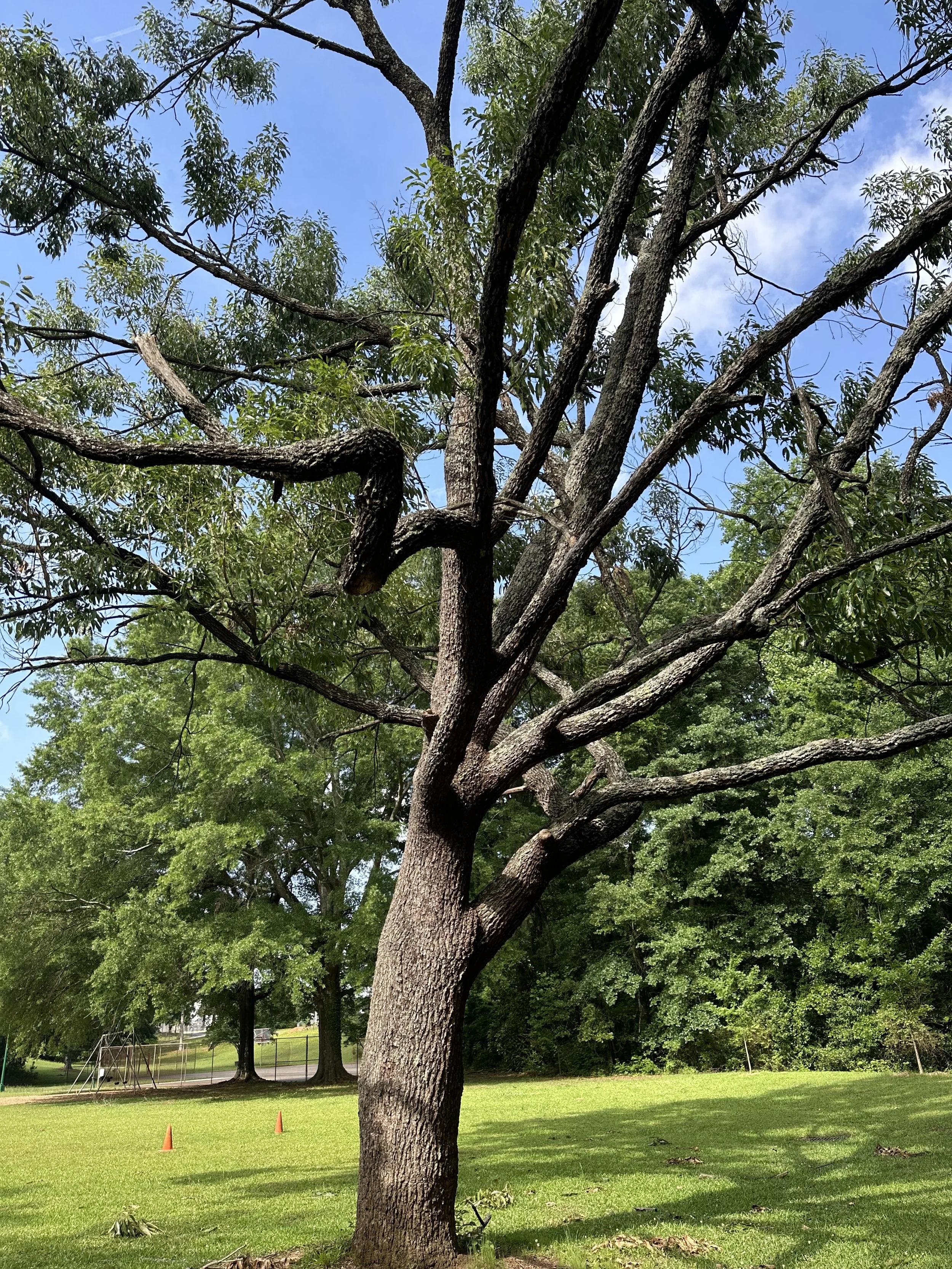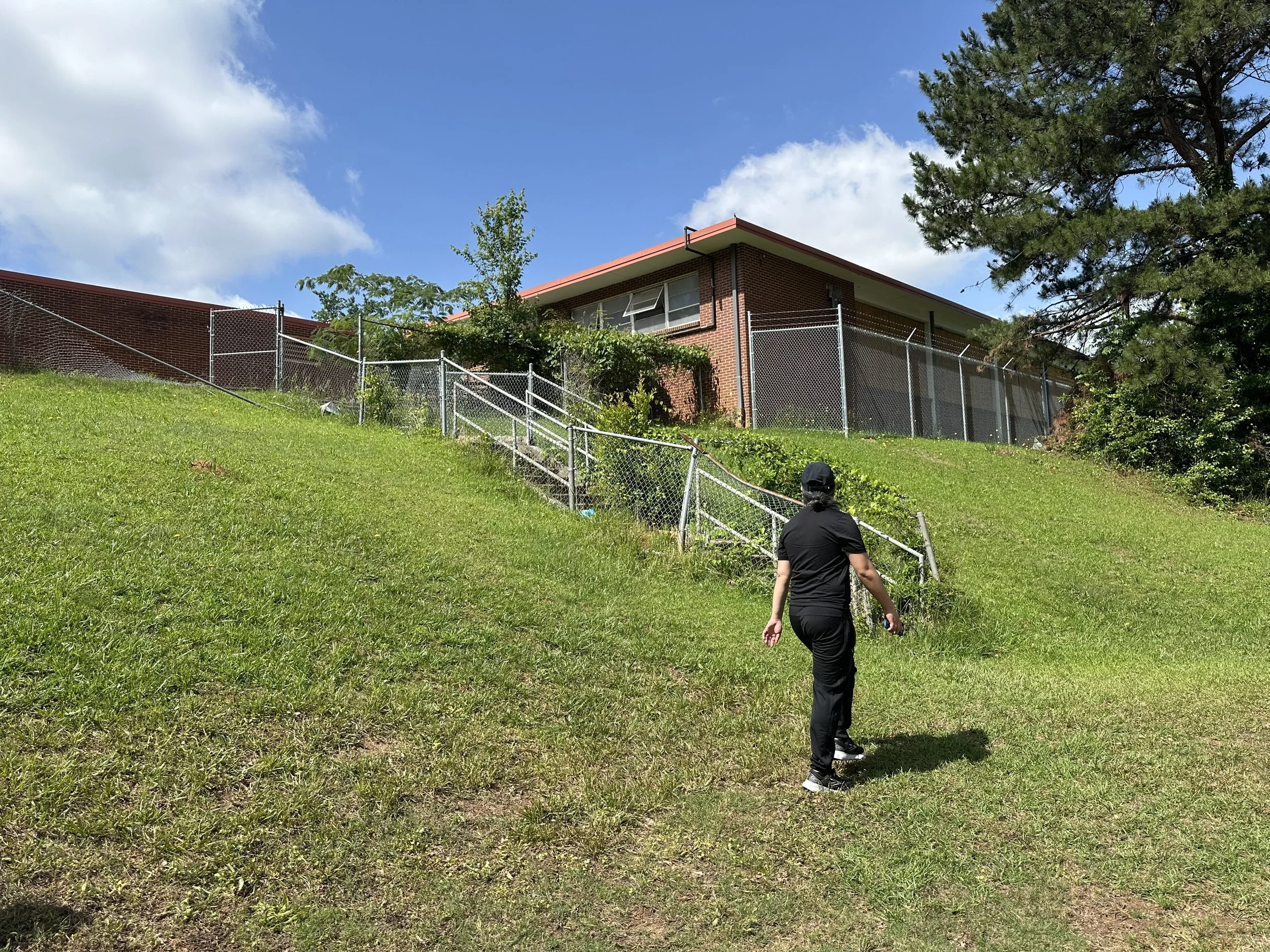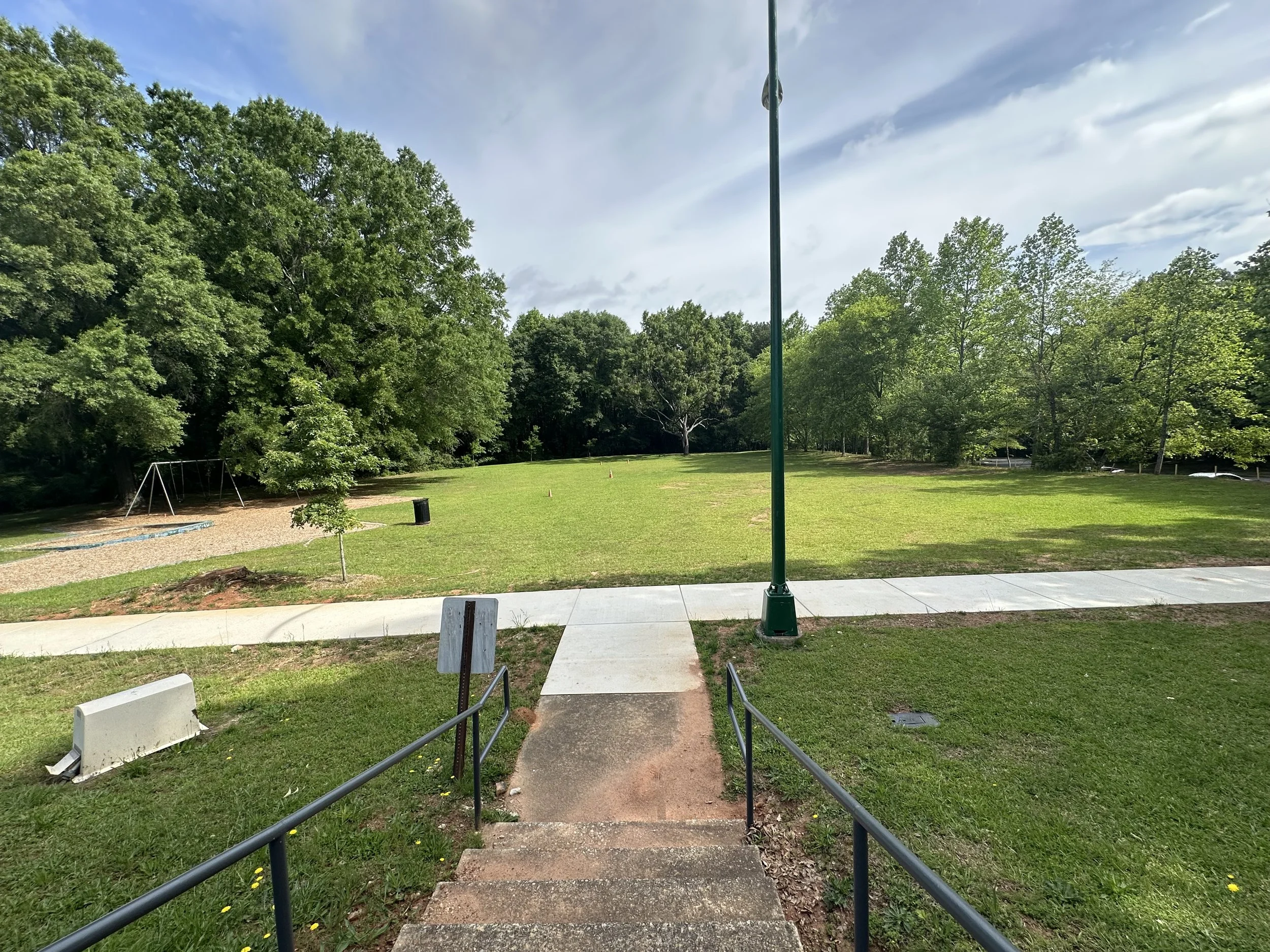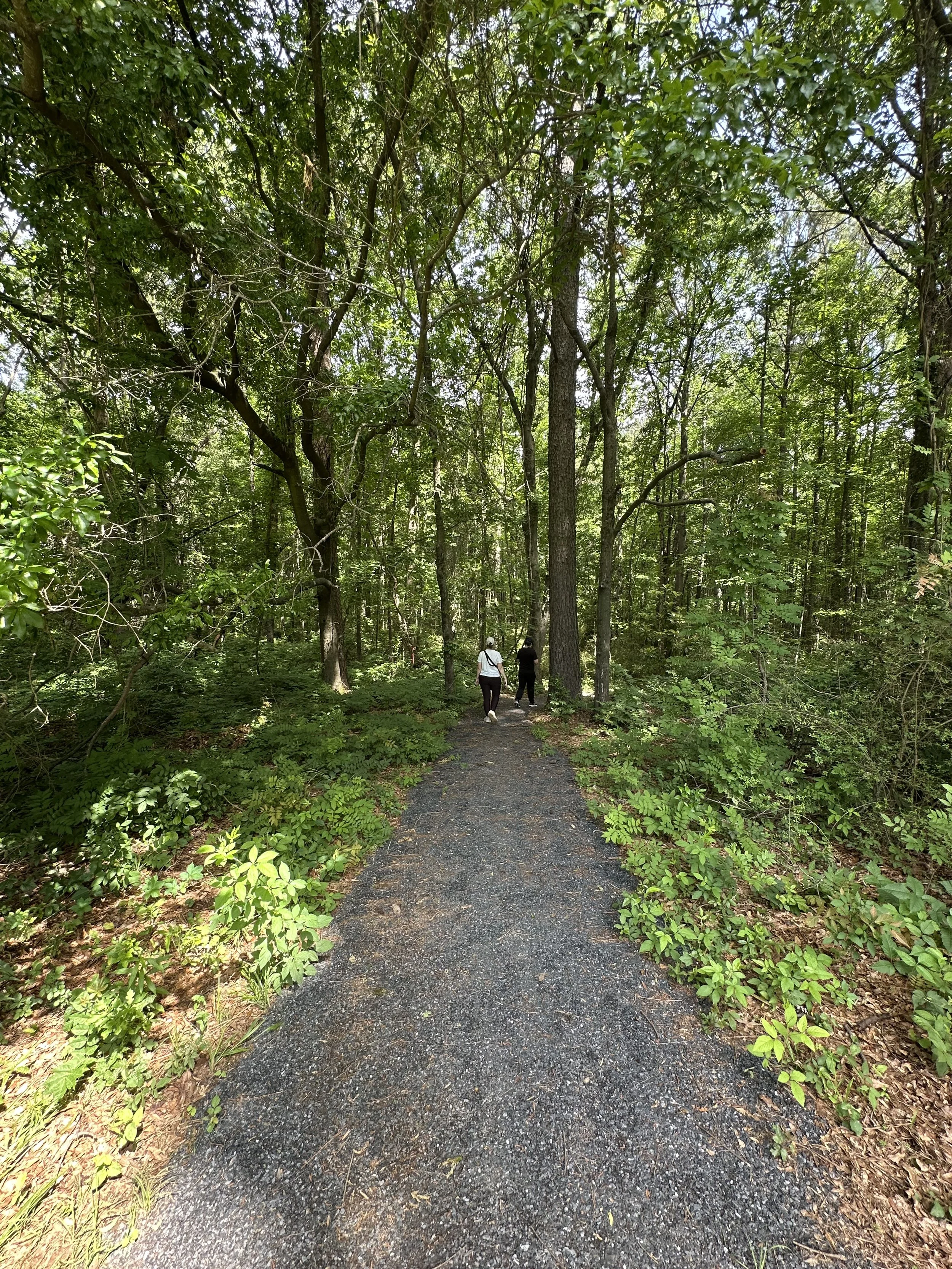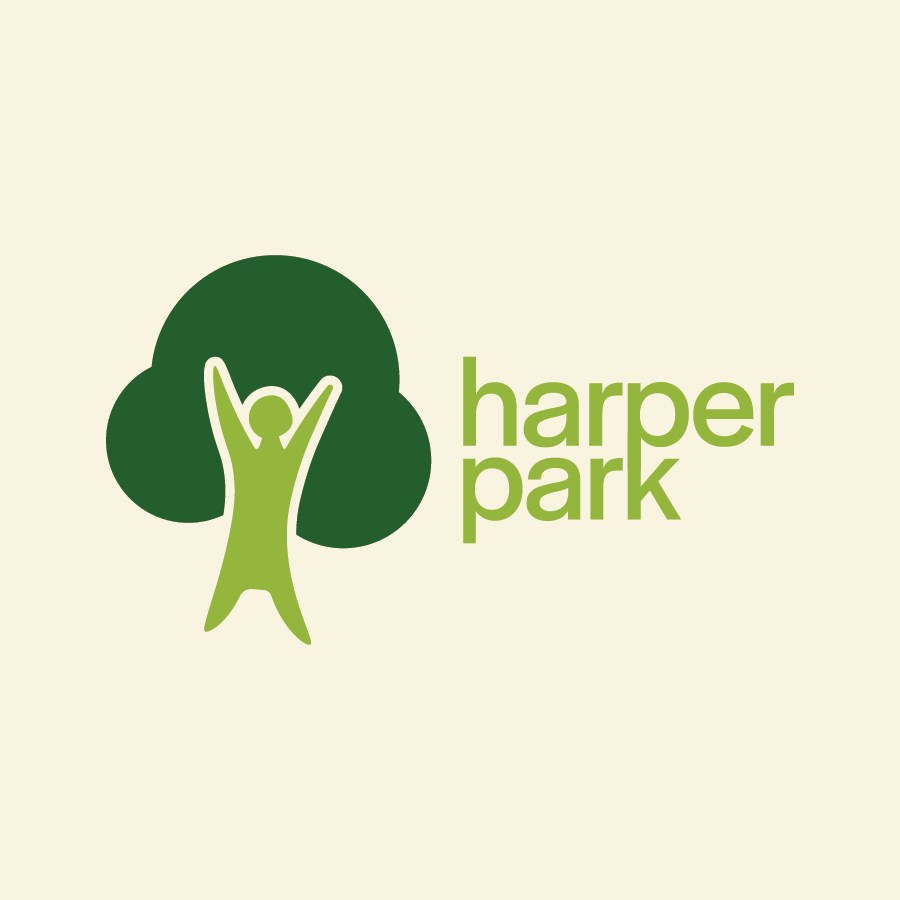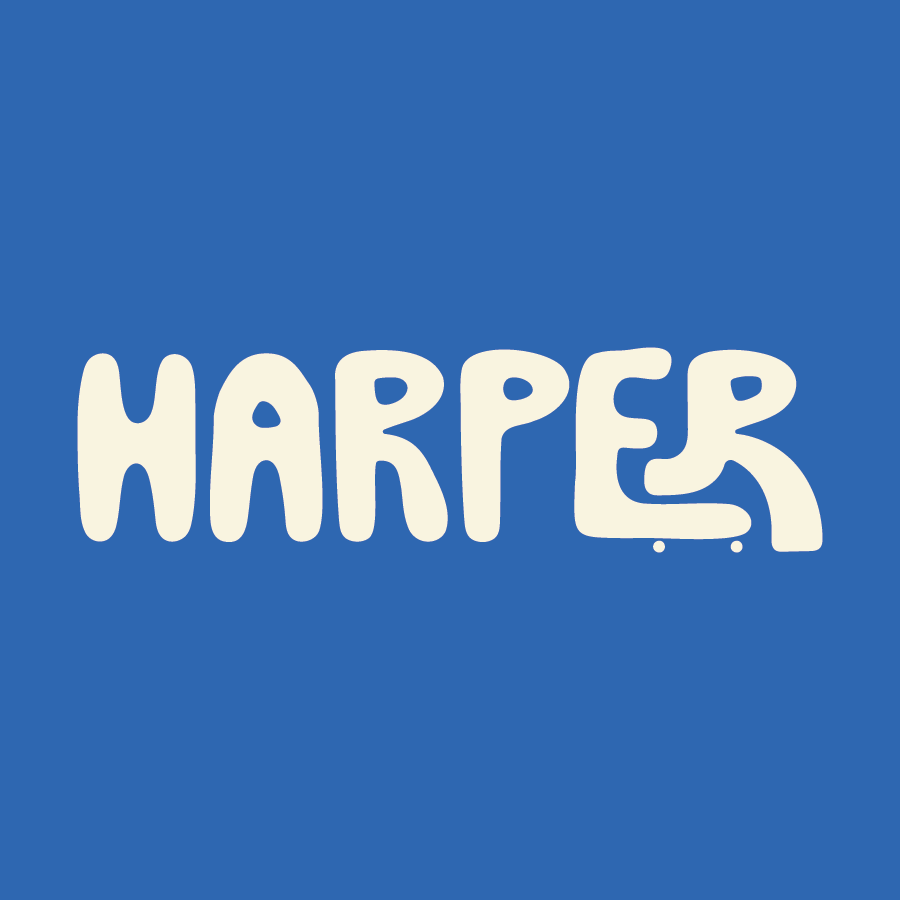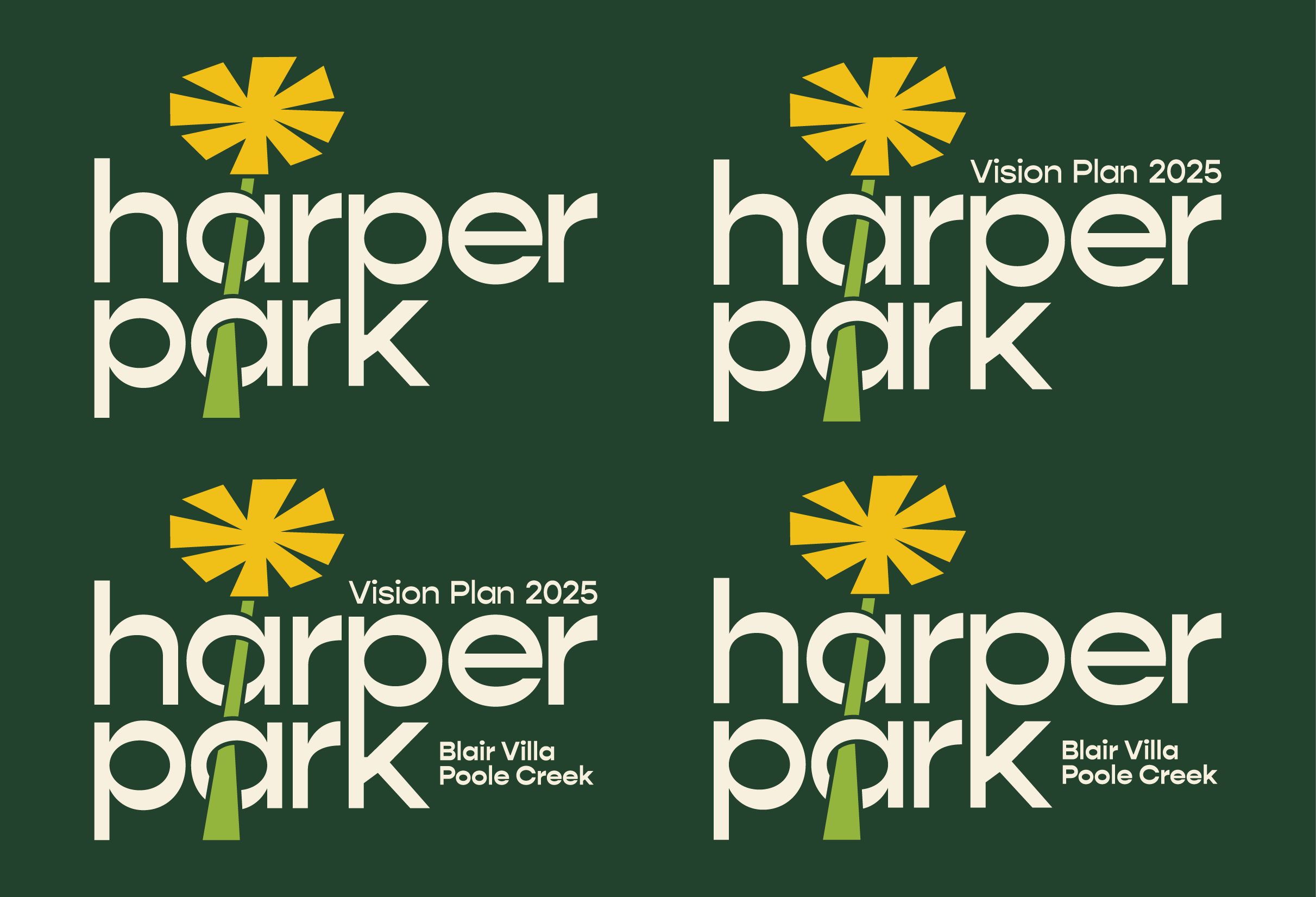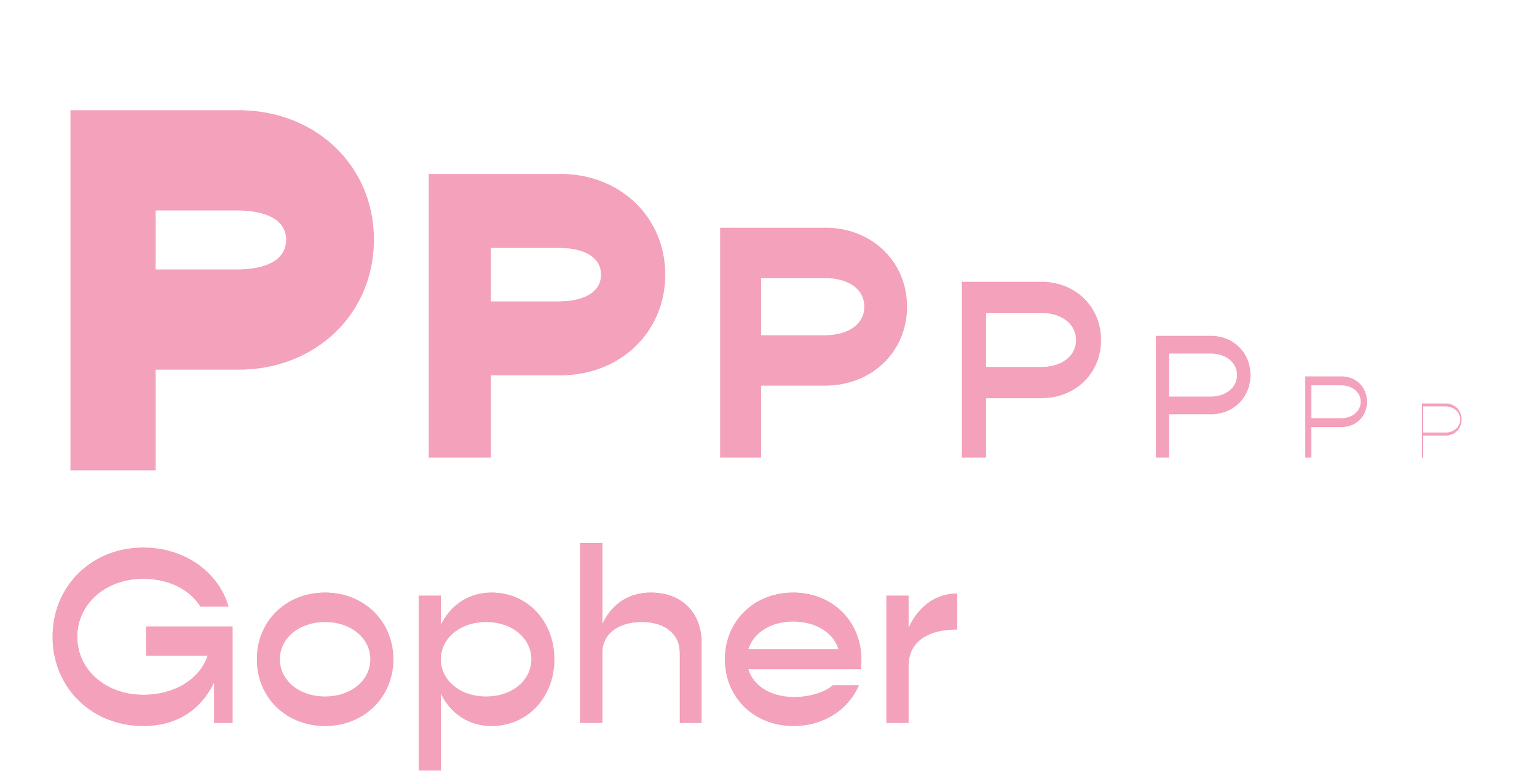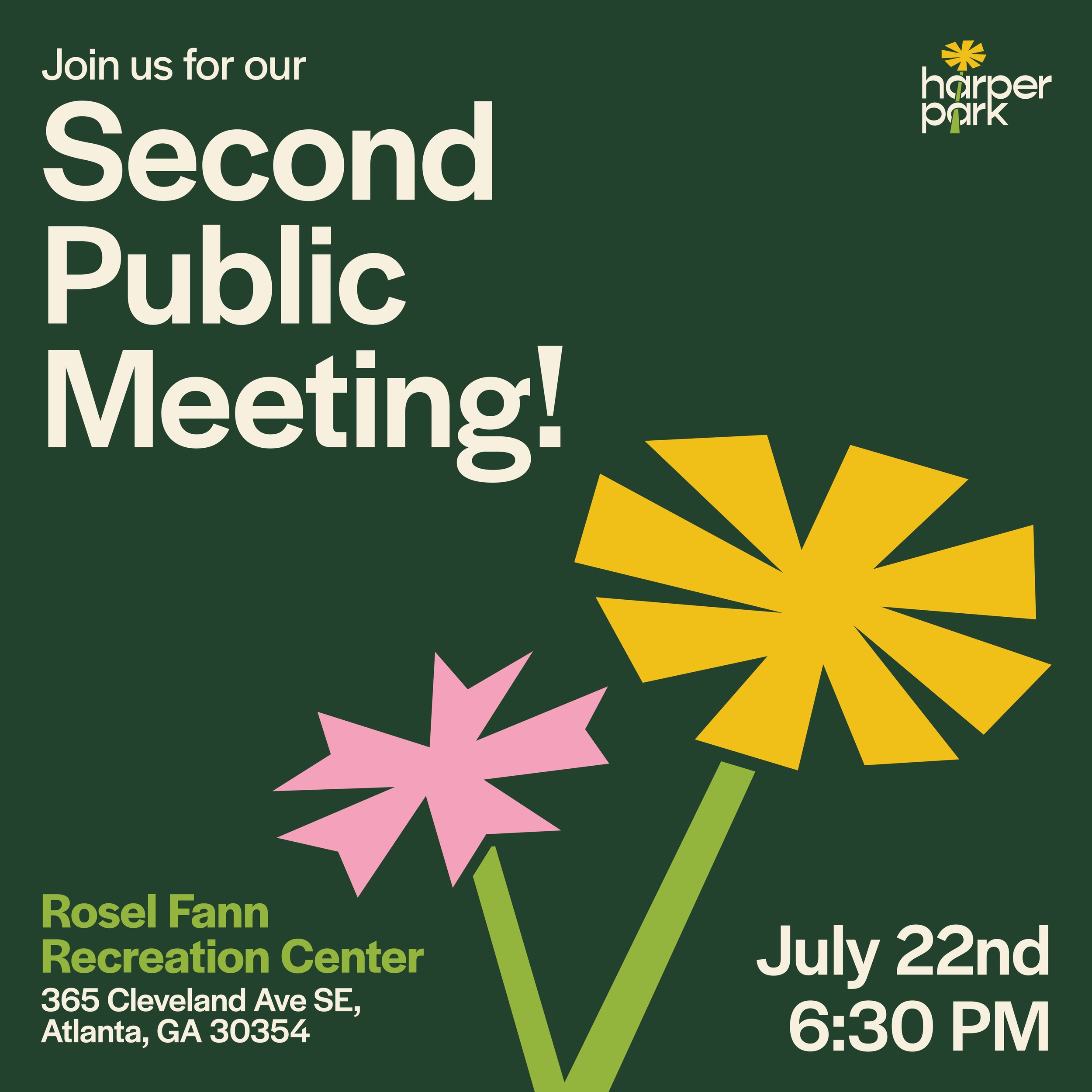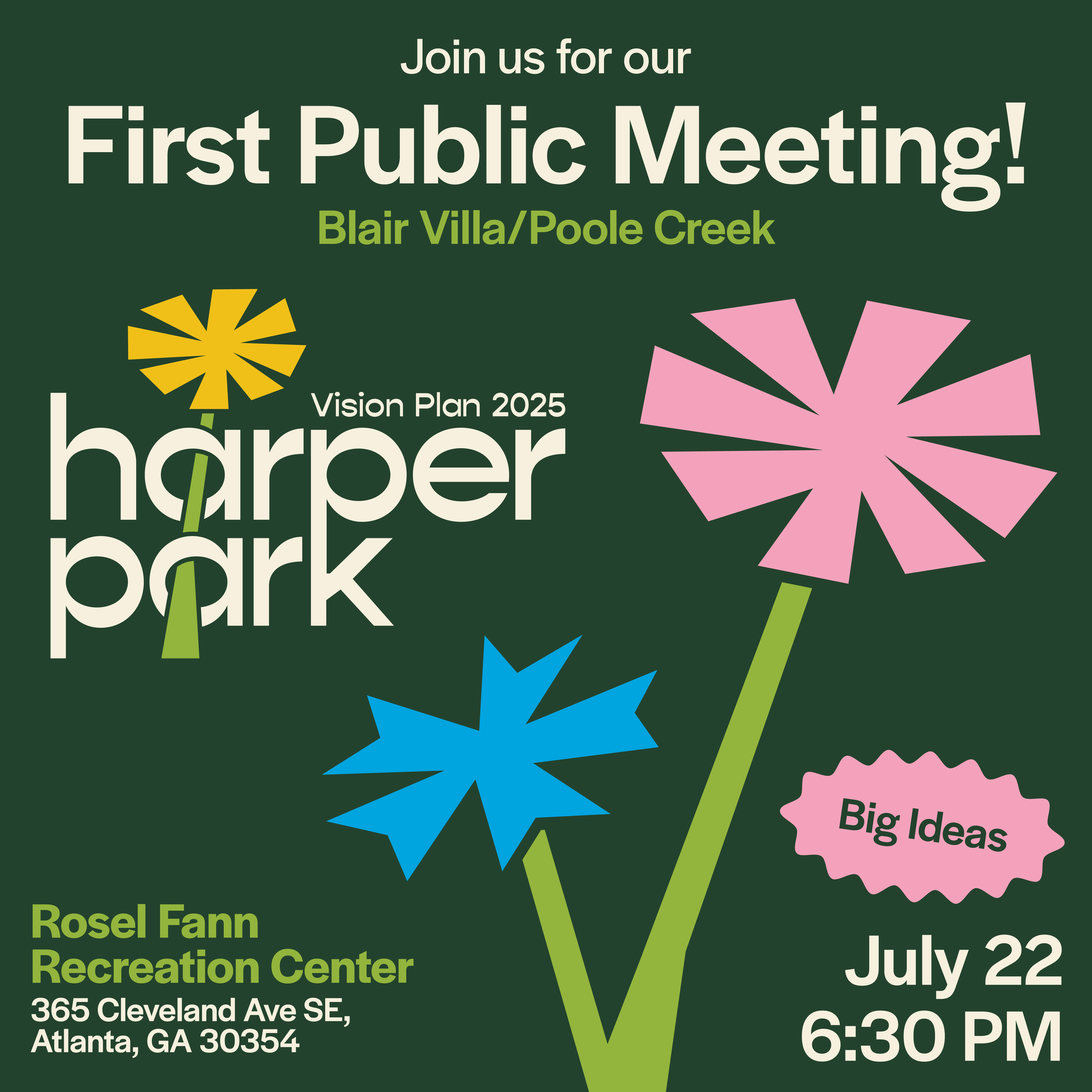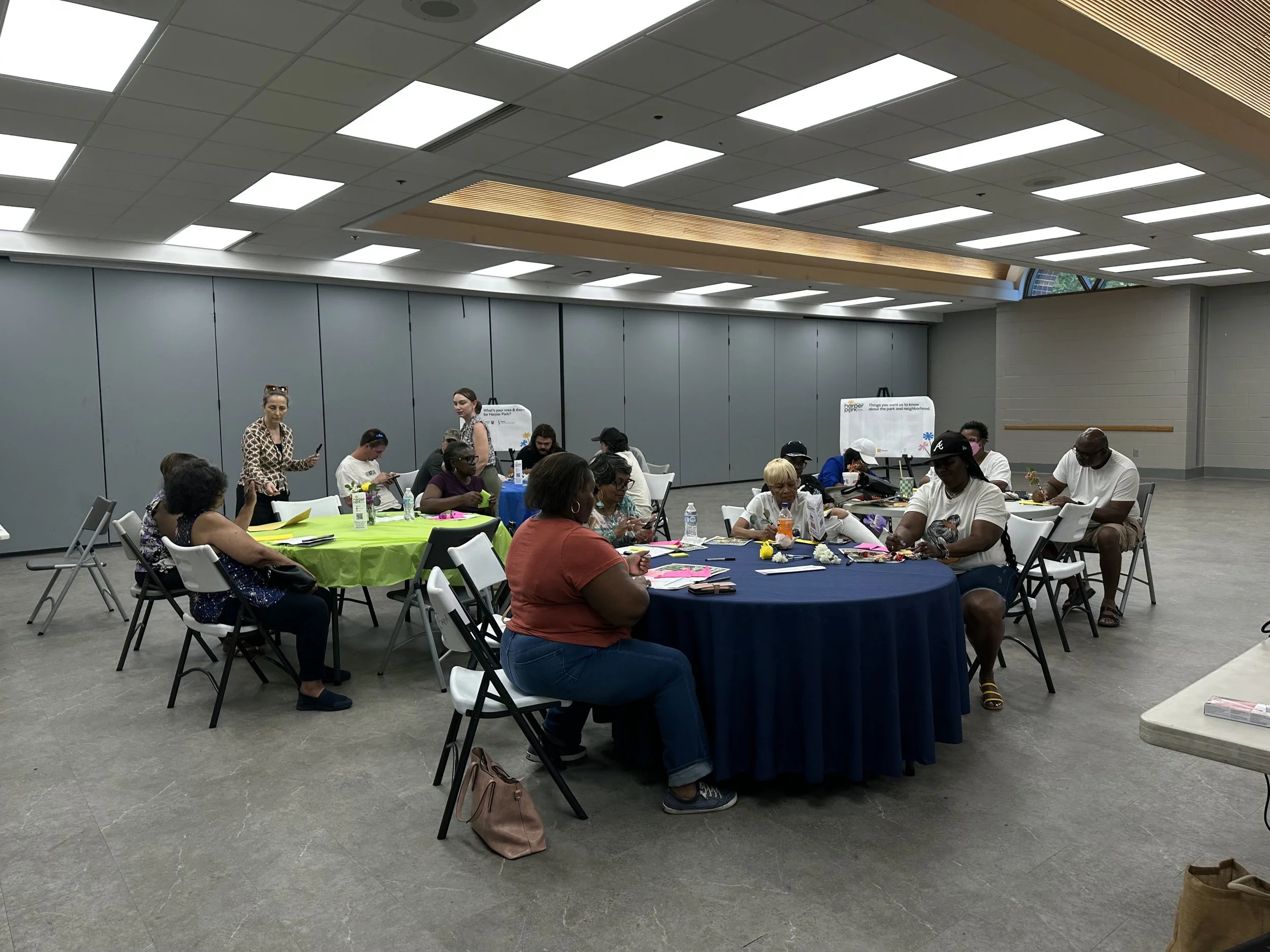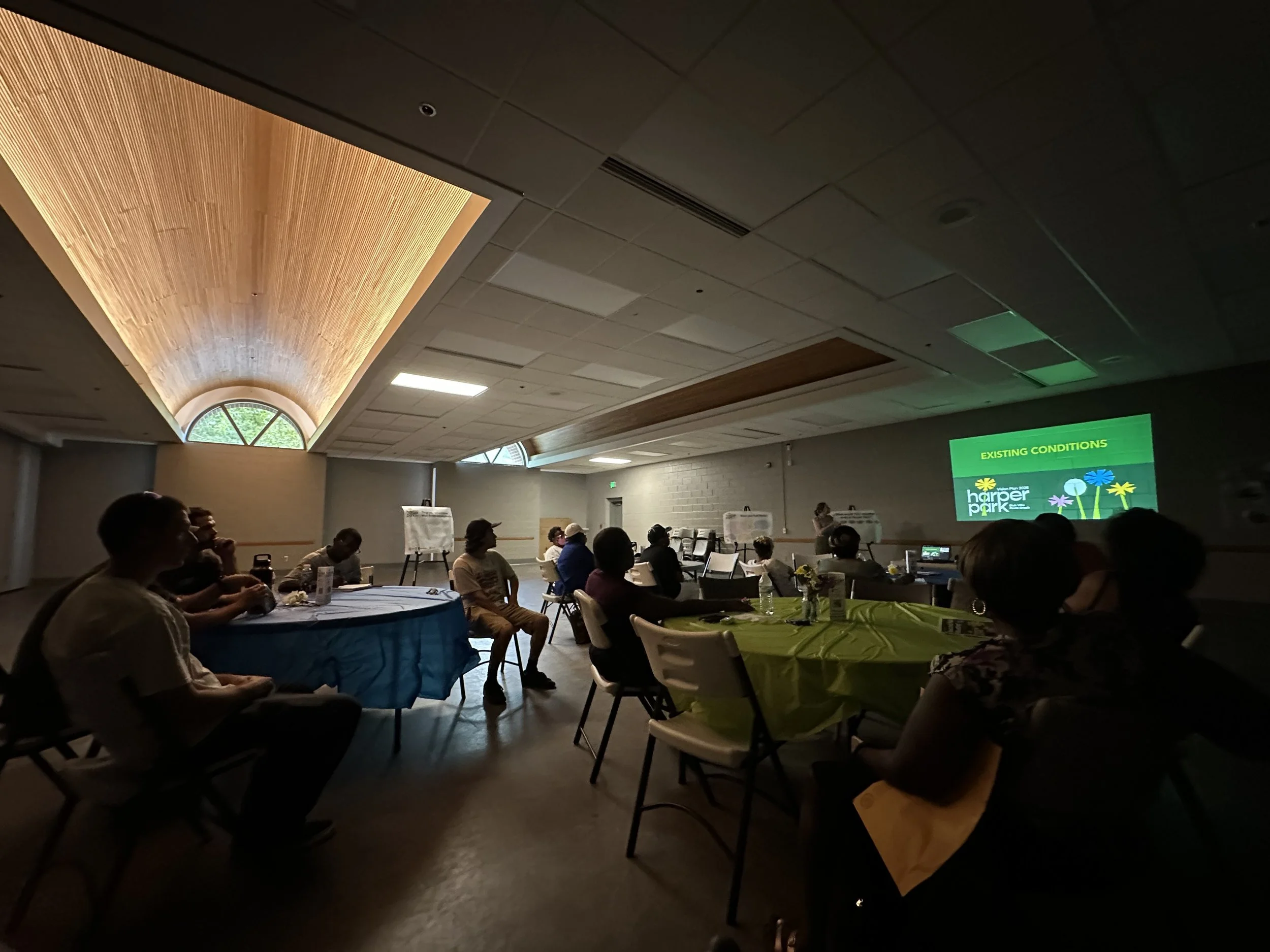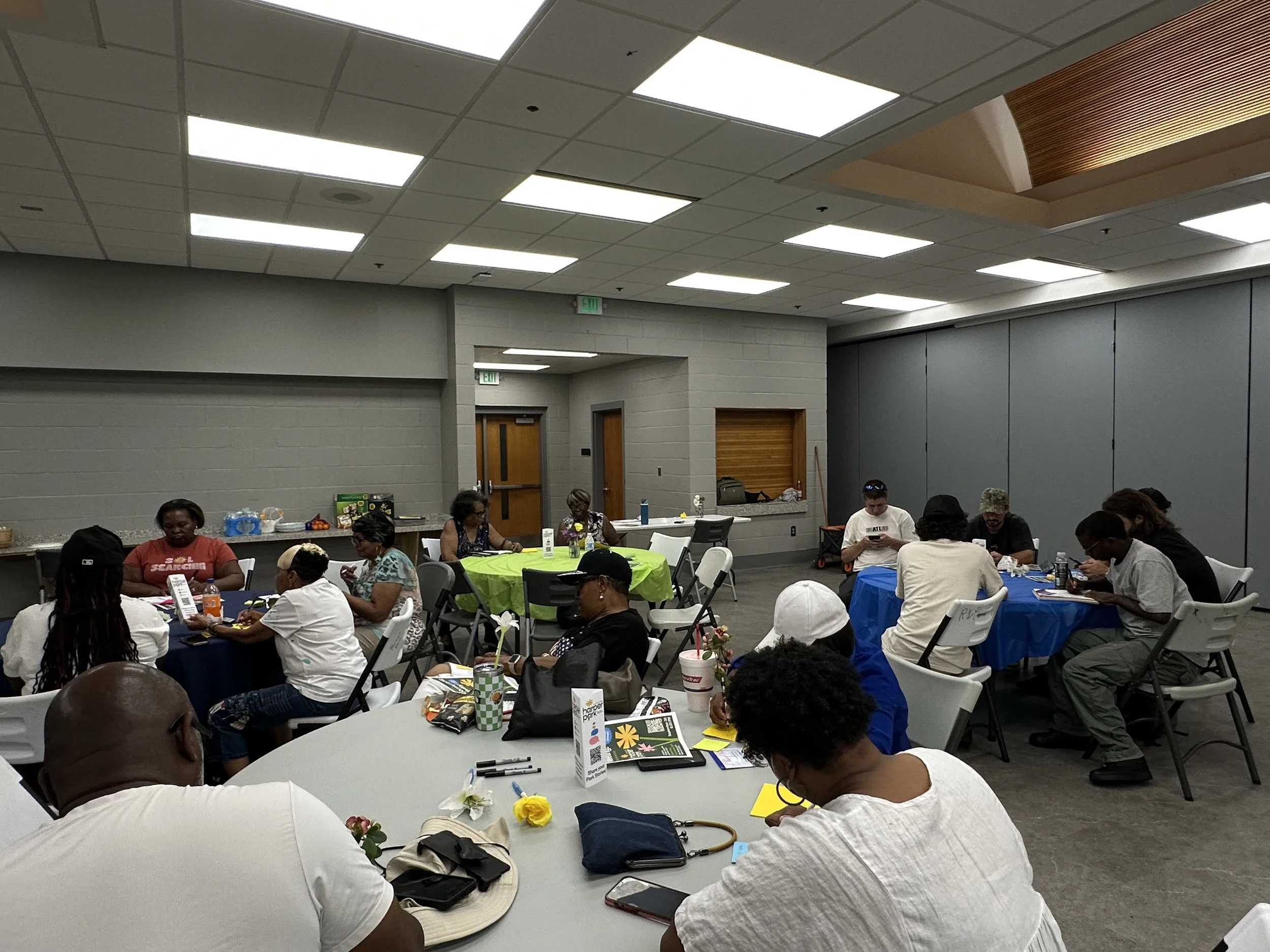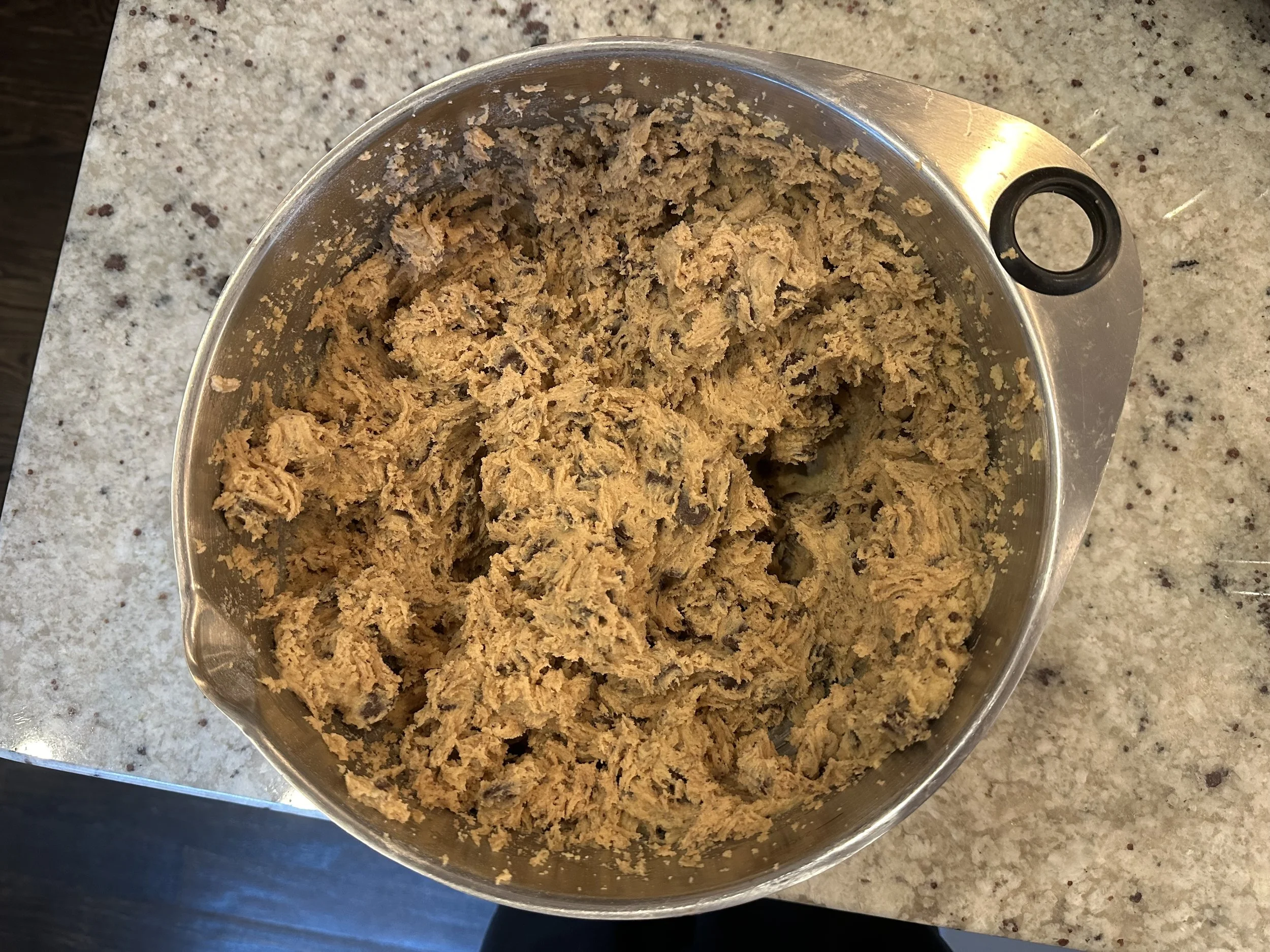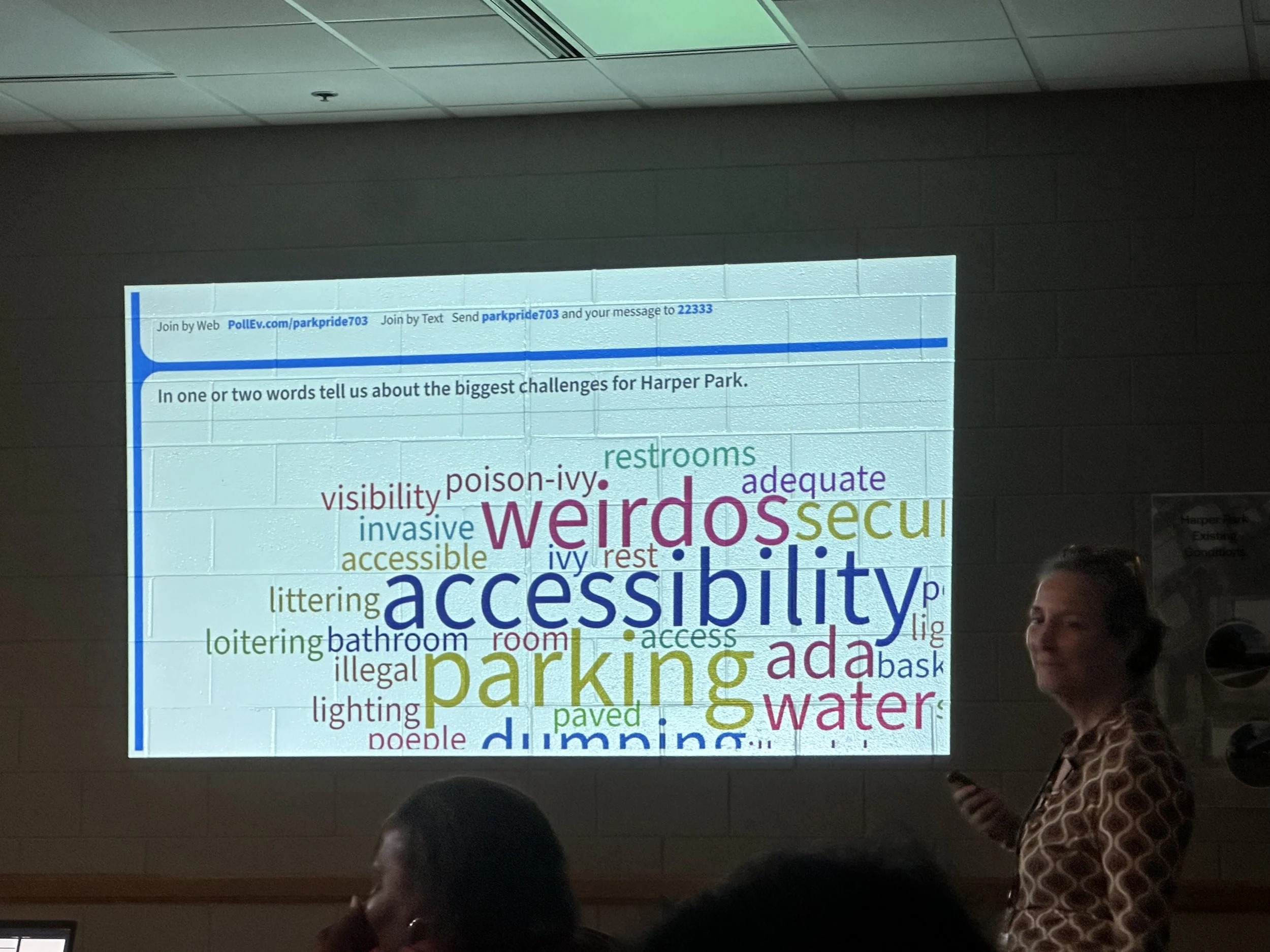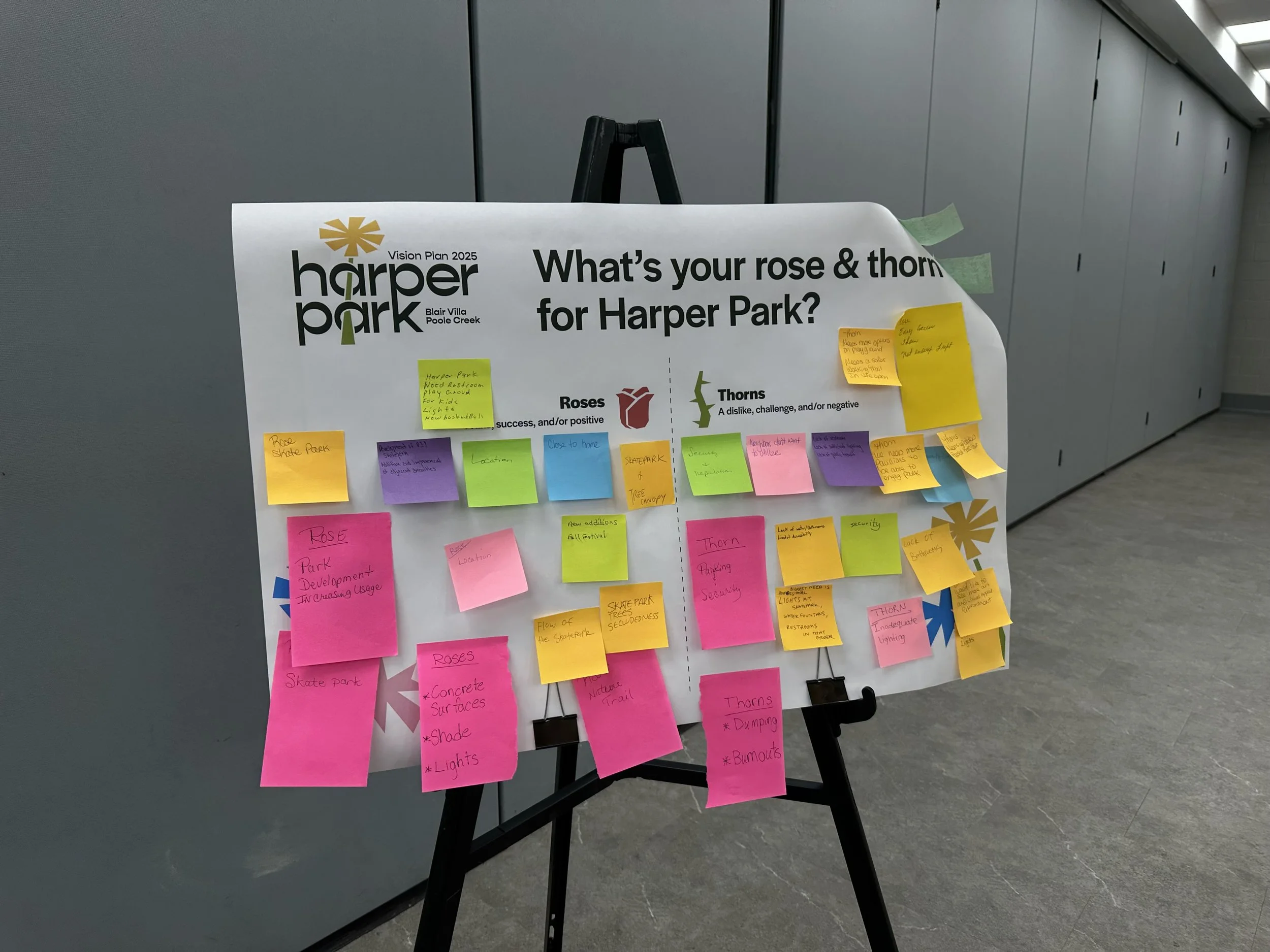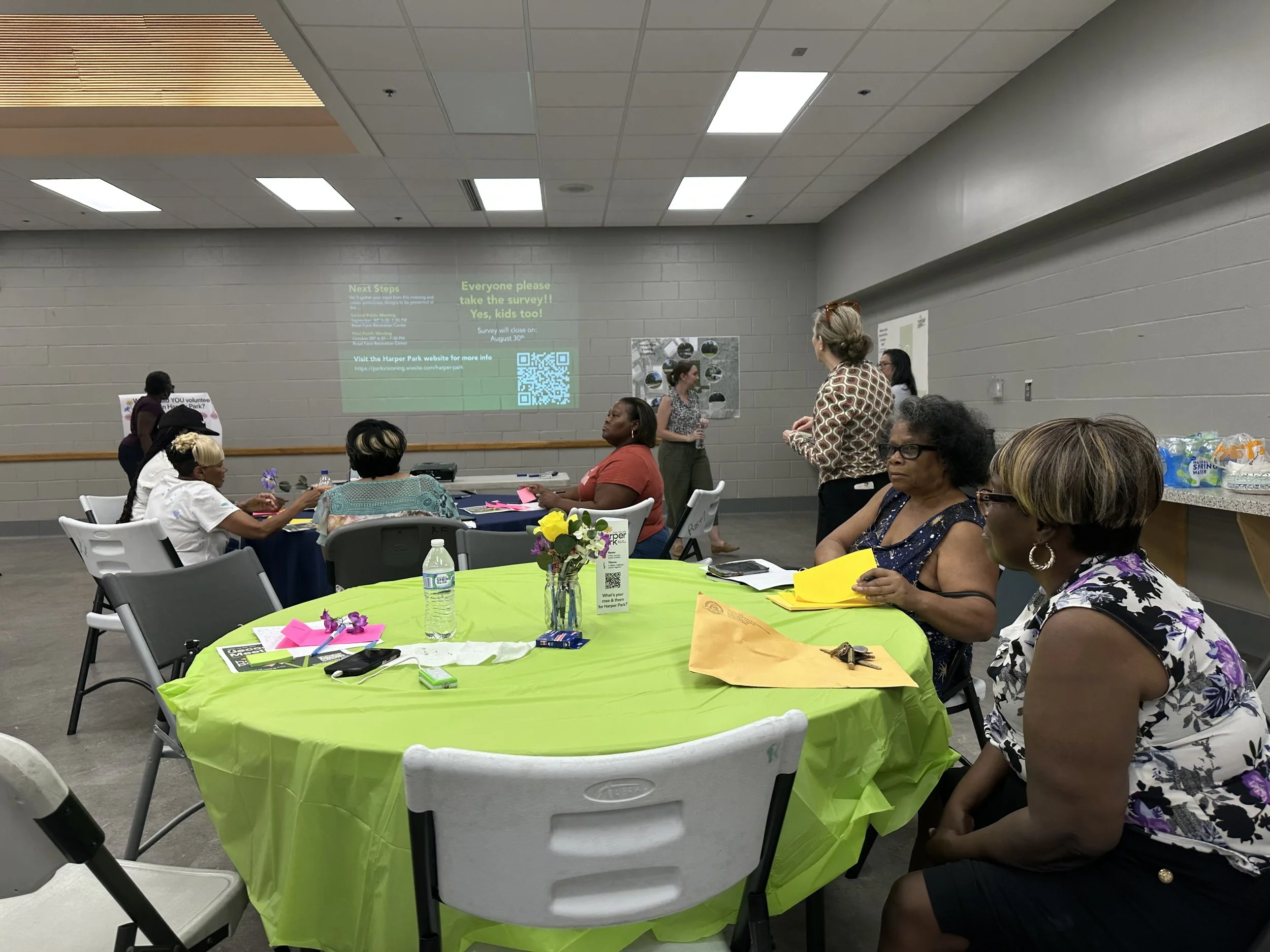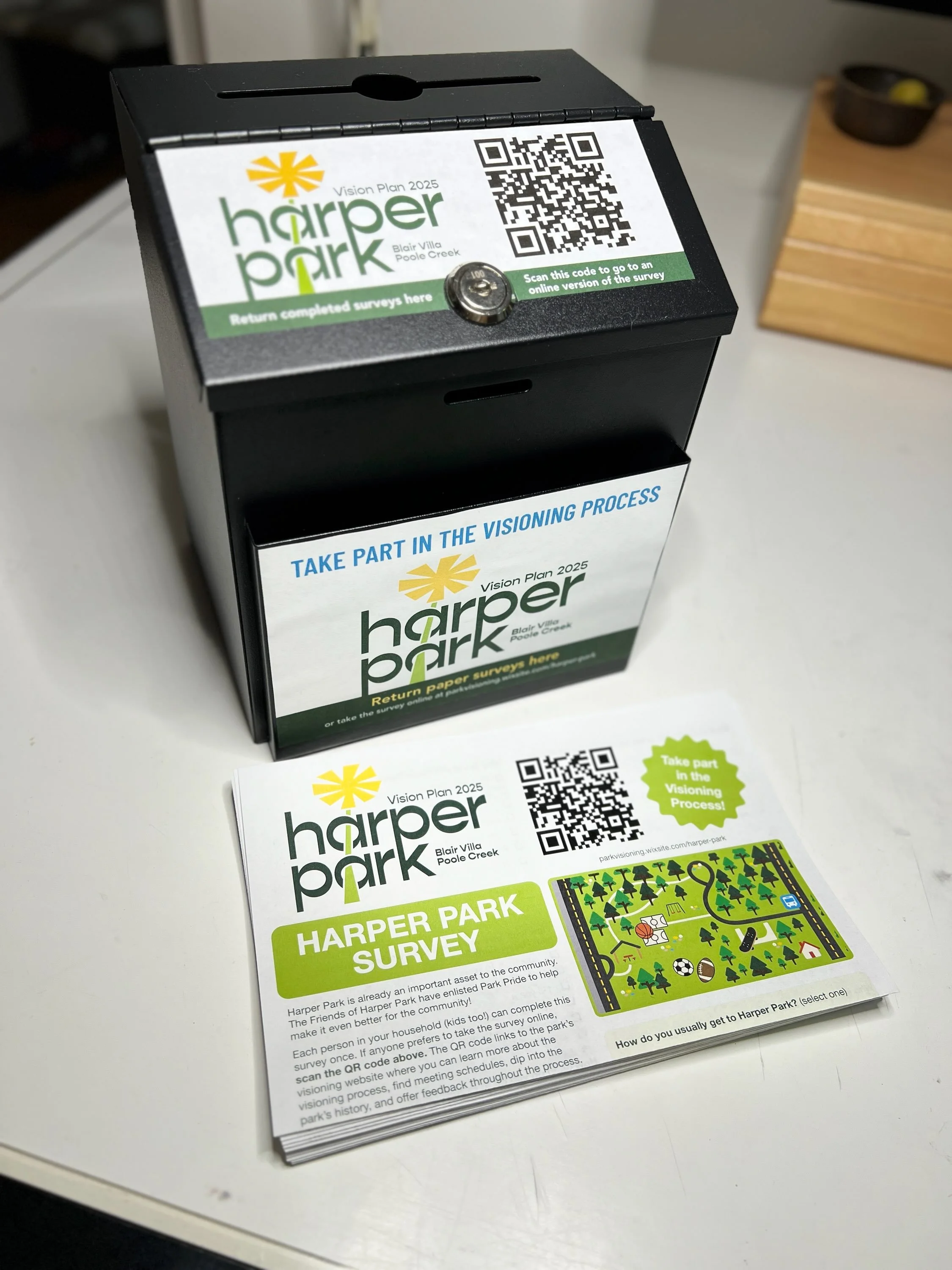Harper Park Case Study
Harper Park is a community-driven brand identity project where I worked with community leaders to shape visuals that authentically reflect the neighborhood’s character and voice.
Timeline
May 2025 - August 2025
Organization
Park Pride
Project Type
Brand Identity, Research
Role
Lead Designer
OVERVIEW
Harper Park is a neighborhood park in the Blair Villa/Poole Creek community, reimagined through a brand identity that supports both the space itself and its long-term vision. The identity reflects the park’s role as a true community hub—rooted in local character and shaped in collaboration with Park Pride.
Rooted in community, growing together
Neighborhood parks are often overlooked—underfunded and missing an identity that reflects the people they serve. Harper Park was no different. As a vital green space in the Blair Villa/Poole Creek community, it lacked a voice to honor its history, including the racial narratives that shaped it. Unlike larger parks with established names and branding, Harper Park needed an identity that could capture its character, acknowledge its past, and bring residents together around a shared vision for the future.
Challenge
CONTEXT OF MY ROLE
Who is Park Pride?
Park Pride is an Atlanta nonprofit dedicated to strengthening neighborhoods by helping communities improve, invest in, and advocate for their local parks. Through programs, partnerships, and on-the-ground support, Park Pride ensures that residents have a voice in shaping the green spaces that serve them. One of its core initiatives is Park Visioning.
What is Park Visioning?
Park Visioning is a collaborative process where neighbors come together to imagine the future of their park and develop a comprehensive plan that reflects their shared needs and aspirations. During my time with Park Pride, I primarily worked on the Harper Park project, among other things.
A key outcome of Park Visioning is the vision plan—a community-driven roadmap for how a park can grow and improve over time. It captures residents’ priorities, like safety, accessibility, and gathering spaces, and translates them into clear recommendations for future design and investment. Once complete, the plan is presented to the City of Atlanta, serving both as a guide for development and a tool to help secure funding and support.
RESEARCH
Understanding the park as a whole
To shape Harper Park’s brand, I split my research into three parts—on-site, historical, and community. Each offered a unique perspective: history revealed the park’s rich but often overlooked past, community research amplified residents’ voices and aspirations, and site research grounded everything in the park’s physical reality. Looking at these layers together gave me a deeper understanding of a disinvested community, ensuring the identity felt not just visually compelling but also authentic and respectful.
ON-SITE RESEARCH
Visiting Harper Park offered a firsthand understanding of the space—how it functions as a community resource, where its strengths lie, and where there’s room for growth. Experiencing the park in person helped ground the identity work in its physical reality and gave a deeper sense of the stories tied to the place.
The lay of the land
Specific Findings
Some main characteristics of the park that stood out to me:
Historic site — built on the grounds of the old Atlanta Police Department training facility.
Proximity to the airport — its location ties directly to the area’s layered history and development.
Distinct landscape — a large hill that shapes the park’s character and views.
Natural setting — tree-covered trails that create a sense of escape within the neighborhood.
Open space — expansive fields that serve as flexible gathering and recreation areas.
New amenities — a recently built skatepark that brings fresh energy and attracts younger visitors.
Photos of Harper Park
HISTORICAL RESEARCH
Where the roots run deep
To begin the historical research for Harper Park, I combined community conversations with archival study. I spoke with residents to capture personal stories and perspectives, while also researching online to frame the park’s broader context. At the Atlanta History Center’s Kenan Research Center, I dug into primary sources and records that uncovered the park’s layered past. This mix of lived experience and documented history created a fuller picture of the social, cultural, and racial forces that have shaped Harper Park and its surrounding neighborhoods.
A Disadvantaged Area
Harper Park and the Blair Villa/Poole Creek area were deeply shaped by systemic racism and Atlanta’s airport expansion, which displaced families, fractured neighborhoods, and disrupted nearby Black schools like the Rosenwald Schools—once vital centers of education and community. Facing this history is key to understanding both the community’s resilience and the forces that continue to shape the park today.
Timeline
We built a timeline to share a clear, digestible history of the park. This, along with other historical research, helped guide design decisions and ground them in context. People have lived in this community their whole lives, and it was important not to approach the work as outsiders who “know better,” but instead to listen and learn from those already rooted here.
COMMUNITY RESEARCH
Listening to the community
Community research for Harper Park began with conversations and meetings that brought residents and leaders into the process early. We started with small committee sessions to hear directly from community leaders about their priorities for both the branding and the park’s vision plan. These insights shaped the direction of a larger public meeting, where broader input was gathered. Beginning with leadership voices and then widening the circle created a foundation rooted in both guidance and collective input.
This was taken at one of our committee meetings! That’s me on the very left (ignore my posture haha).
Committee Direction
From the first few committee meetings, we moved forward with creating logo variations that could serve both the brand and the vision plan. The design was informed by the park’s physical features while also capturing the tone of what community members hope to bring to Harper Park—an identity that reflects place while pointing toward possibility.
This next section will talk about three logo variations created for Harper Park!
LOGO VARIATIONS
Translating their vision
From the early committee meetings with community leaders, I developed three logo variations that reflected their input and aspirations. Drawing from what they shared—what stood out, what they hoped to attract, and how they wanted the park to be seen—I created options that ranged from subtle to bold, while still keeping in mind the public nature of the space. Each variation highlighted a different side of Harper Park and its community, giving leaders clear directions to react to and refine through the visioning process.
The three logos, from “mild to wild”, each captured a different side of Harper Park with its own look and feel. It gave the community a spectrum to respond to—from safe and familiar to bold and adventurous.
Committee Decisions
From the early committee meetings, community leaders gravitated toward the second logo for its creativity and uniqueness. They especially connected with the flower symbol—what it represented, how it tied to Harper Park itself, and the fresh energy it could bring to the park’s identity. I made a slight tweak to the logo so it could scale more easily, keeping it clear and recognizable at any size.
These are different logo variations, created for the vision plan and the neighboring communities. Each one keeps the identity consistent while adapting to the contexts where it will be used.
BRAND IDENTITY & DELIVERABLES
Designs in bloom
After the committee selected the logo, we moved forward with building a full brand identity for Harper Park. This system expanded the logo into practical deliverables that could support the visioning process and engage the wider community. Yard signs, social media posts, posters, surveys, etc. were all designed to carry the new identity, ensuring consistent visuals across touchpoints. Together, these deliverables gave the brand a real presence in the neighborhood while reinforcing the community’s voice throughout the visioning process.
Large square yard signs were placed around Harper Park and nearby neighborhoods—designed to be reusable so the community could keep sharing input and seeing updates over time.
These were the first drafts of social posts shared with the committee—meeting dates were still up in the air, but their feedback shaped the final versions.
The final social posts brought in the committee’s feedback, making them more informative, recognizable, and rooted in the idea that the community’s voice leads the way.
PUBLIC MEETING
The first public meeting!
After our committee meetings with community leaders, we opened the process to the wider neighborhood with the first public meeting at the Rosel Fann Recreation Center. Residents from across the area came together to learn about the project, share feedback, and take part in the visioning process. We presented the branding work alongside other elements of the plan, creating space for people to respond, offer input, and help shape an identity that truly reflected the community.
This was the first of three public meetings for Harper Park. The following two happened after my time with Park Pride, but it was exciting to see the community engage and help shape the future of the project.
At the public meeting, we included interactive activities that let residents share ideas in real time and closed with feedback boards to gather even more input. And because no community gathering feels complete without a little comfort, I brought along a big batch of chocolate chip cookies to help make the space feel welcoming! I was perfecting a cookie recipe at the time as well—haha!
DATA COLLECTION
The more the merrier
To make sure Harper Park’s brand and vision plan reflected the community, we built user research and data collection into every step of the process. The goal was simple: give residents different ways to share their voices and make sure those voices guided the decisions. From interactive activities during meetings to surveys and feedback boards, each method offered a unique lens—together creating a fuller picture of how people see the park and what they want it to become.
Word Clouds
During the presentations, we used interactive word clouds to get people engaged in real time. They could see how their vision lined up with others, which not only collected data but also built a sense of community and connection in the room. It was also fun to watch the bigger words pop up—it showed clear patterns and even revealed the park’s two main groups, from longtime community members to the younger skaters who now flock to the new skatepark.
The new skatepark—named after Ruby Harper, a bus driver for the Rosenwald Schools—brought a wave of skaters into the area. Older residents saw it as a welcome addition, adding energy and youthfulness to the community.
Feedback Boards
At the end of the meeting, we introduced feedback boards. These collected more input, but also gave residents a chance to share personal stories about the park and what they hoped to see reflected in its future. It was about putting people directly into the heart of the visioning process. We then collected the data and put it into an excel sheet.
We also had accompanying table tents to have on tables, so they could see some of the questions on the boards straight from their table.
Surveys
As part of the data collection, I created both digital and physical surveys to capture the community’s perspective on Harper Park. The digital survey, built in Alchemer, was shared through QR codes posted around the neighborhood and on the project website. To make it more approachable, I illustrated a cartoon-style context map of the park, showing amenities and activities in a way that felt friendlier than a standard Google/Apple Map.
The physical survey was designed as a separate version and placed in key spots like the skate park, gazebo, and Rosel Fann Recreation Center, with drop boxes for responses. We also delivered copies directly to nearby residents identified during committee meetings as important voices to include. Both versions asked about the best and most challenging aspects of Harper Park, along with ideas for improvements, while also giving us a sense of how many residents were engaging in the visioning process.
FUTURE OF HARPER PARK
As the park grows onwards
The surveys, feedback boards, and interactive activities created a strong foundation of input that will guide the next stages of the visioning process. From here, a fully developed vision plan will take shape, weaving together the community’s priorities with a clear identity system to keep everything connected. This identity will serve as a thread throughout the plan—framing the ideas, supporting the communication materials, and carrying forward into future efforts around Harper Park. In this way, the community’s voice and character remain visible not just in the plan itself, but in every step that follows.
Me at Doll’s Head Trail—looking to other parks for inspiration and imagining what could be possible for Harper Park.

